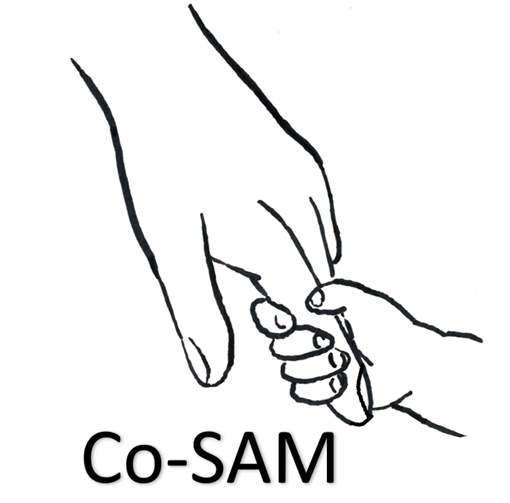ZIMBABWE
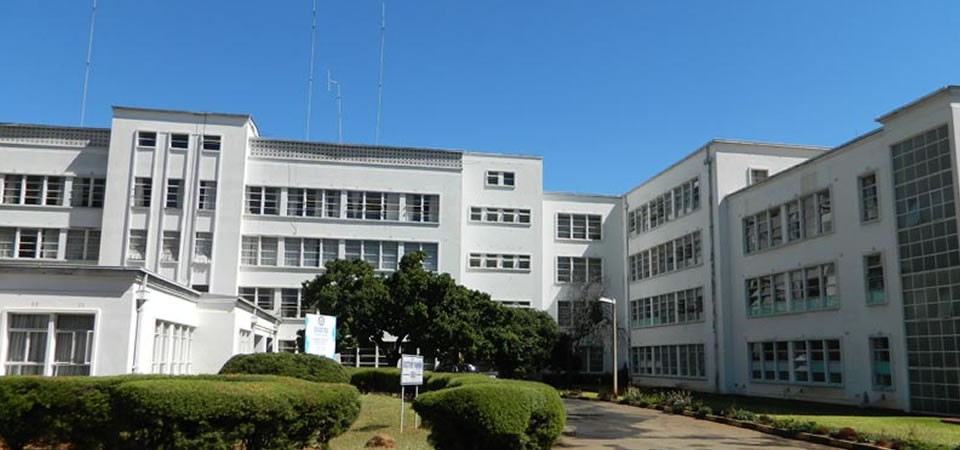
Sally Mugabe Central Hospital - Harare
Sally Mugabe Central Hospital, also known as Harare Central Hospital or Gomo Hospital, is the second-largest public hospital in Zimbabwe, following Parirenyatwa Hospital. It serves as the primary referral center for patients from the northern region of the country and provides essential services to the residents of Greater Harare.
The hospital was officially opened on May 2, 1958, by Lord Dalhousie, the then Governor General of the Federation of Rhodesia and Nyasaland.
Since 1966, Harare Hospital has been the main teaching hospital for practical training in the University of Zimbabwe’s Faculty of Medicine. It is fully accredited by the College of Surgeons for East-Central and Southern Africa to train surgeons and also offers training for various medical professionals, including nurses, theater nurses, pediatric nurses, midwives, radiographers, laboratory technicians, and pharmacy technicians.
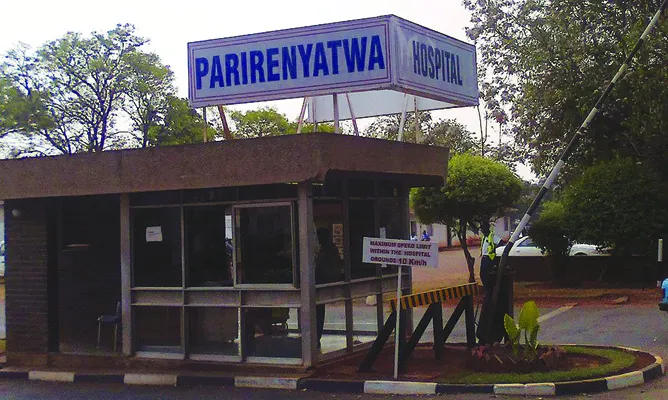
Parirenyatwa General Hospital
Parirenyatwa General Hospital is a government-established district hospital in Harare and the largest public hospital in Zimbabwe. Originally named Andrew Fleming Hospital after the British South Africa Company’s principal medical officer, it was renamed after Zimbabwe’s independence in 1980 to honor Tichafa Samuel Parirenyatwa (1927–1962), a close associate of Joshua Nkomo and the first black person in Zimbabwe to become a doctor.
In addition to its general medical and surgical services, the hospital features specialized sections such as Mbuya Nehanda for maternity care, Sekuru Kaguvi for eye treatment, an annex for psychiatric patients, and various pediatric wards. The main hospital complex has over 5,000 beds and 12 operating theaters.
The University of Zimbabwe’s College of Health Sciences is based at Parirenyatwa, where medical students begin their clinical training from their third year. The hospital also houses a nursing school that accepts three intakes of general nursing students annually for a three-year diploma, along with post-basic courses in specialties like intensive care, theatre nursing, community and primary care nursing, and ophthalmic nursing.
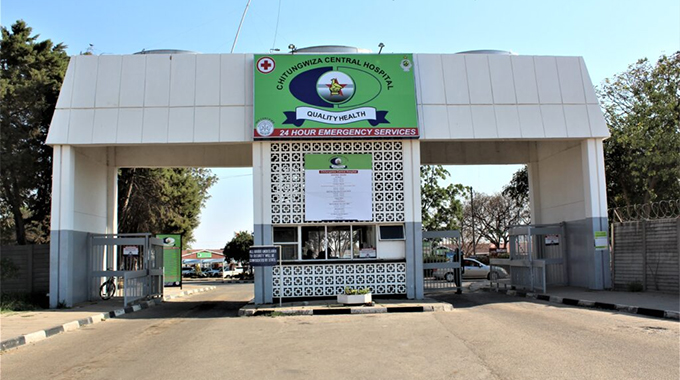
Chitungwiza Central Hospital
Chitungwiza Central Hospital, a government institution located in Chitungwiza, was initially opened in 1984 as a provincial hospital and officially inaugurated by Prime Minister R.G. Mugabe on November 6, 1986. In September 2005, it was upgraded to a central hospital and has since become a key provider of tertiary healthcare services. The hospital achieved ISO certification in 2008 and has maintained this certification to the present day.
ZAMBIA
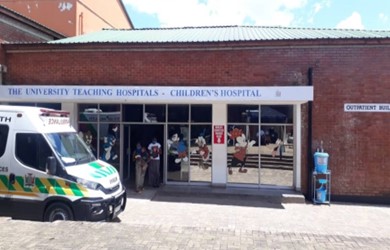
University Teaching Hospitals - Children’s Hospital
UTH-Children’s Hospital is located in Lusaka, Zambia. It is the highest public paediatric hospital in the country. Complicated cases from Lusaka and other parts of the country are managed at this hospital. The average number of monthly admissions is 822 with 4% being Severe Acute Malnutrition (SAM) admissions. The hospital has a specialized SAM ward. Other departments include Out-patient, Haematology, Renal, Infectious Diseases, General Medicine, Paediatric Intensive Care Unit, Physiotherapy and Audiology/Speech therapy. The bed capacity of the hospital is 365 of which 57 beds are in the SAM ward.
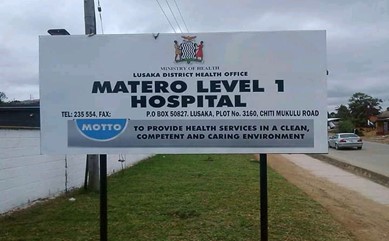
Matero Level One Hospital
Located in the north-western part of Lusaka town, Matero level One hospital is one of the district hospitals of Lusaka. It provides a comprehensive range of services including out-patient and in-patient care, paediatrics, maternity services, physiotherapy, dental care, ophthalmology, emergency units and surgery theatres. The hospital serves a population of about 333,530 people of which 53,851 are under-five children. The average number of annual paediatric admissions is 1,889 of which 8% are SAM admissions. The paediatric ward bed capacity is 38 of which 5 are in the SAM side ward.
KENYA
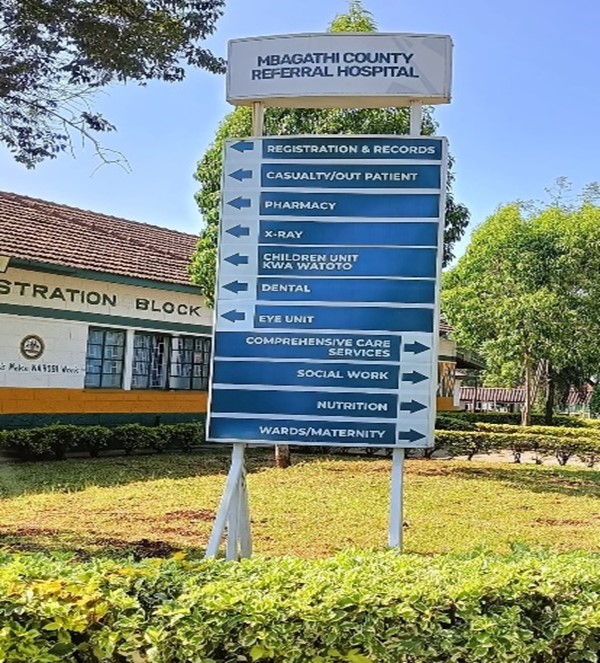
Mbagathi County Referral Hospital
Mbagathi County Referral Hospital, located in Nairobi County, Kenya, is a public healthcare facility serving a diverse population, mainly the Kibra informal settlement. As a level 5 public referral hospital, it provides essential medical services, including maternal and child healthcare, outpatient and inpatient care, and specialized treatments. The hospital receives about 2000 pediatric admissions per year thus plays a significant role in addressing child health challenges including malnutrition and its comorbidities.
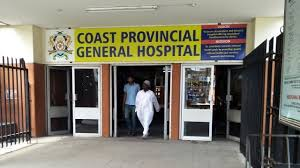
Coast General Teaching and Referral Hospital
Coast General Teaching and Referral Hospital is a Level 5 public hospital, the largest within the coastal region, located in Mvita Constituency in Mombasa County. It serves as a primary and referral hospital for residents from Mombasa County, Lamu County, Tana-River County, Kilifi County, Taita-Taveta County and Kwale county.
The hospital has 4 large peripheral outreach facilities located across several suburbs within Mombasa County that include Chaani Coast General in the west of the Island, Vikwatani Coast General and Utange in the north and Mtongwe Coast General in the south.
The main hospital has a bed capacity of 700 beds, out of which 80 are pediatric beds that include 6 bed High Dependency Unit within the Paediatric ward. The hospital also has a Paediatric Accident and Emergency unit which has 15 bed capacity.
Annual paeditric admissions averages 2200 with 6% of these admissions being children with malnutrition.
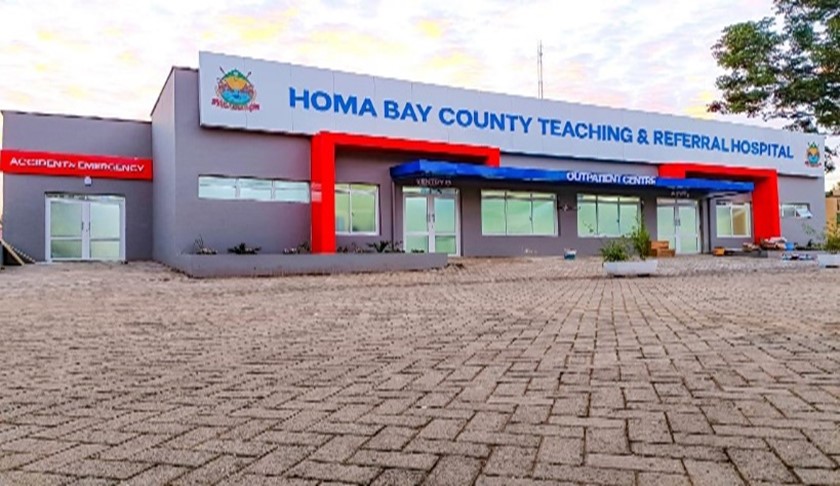
Homabay County Referral Hospital
Homa Bay Teaching and Referral Hospital (HBTRH) is a government health facility that was started in 1969 as a dispensary. It is located in the Southern part of Nyanza, along the southern shores of Lake Victoria with fishing and agriculture as the major economic activity.
Homa Bay County covers an area of 3,183.3 sq km with a population of about 1.3m million people. With children accounting for a population of 77,429.
The facility currently serves as the referral hospital for residents from the 8 sub-counties of Homa Bay County as well as the surrounding counties. It serves as a critical hub for medical services in the region, providing comprehensive healthcare to the local population.
The stunting, wasting and underweight rates for Homa Bay County are 21.8%, 4.6% and 8.6% respectively (SMART, 2016). This means that whereas the acute malnutrition levels are within the normal range, the chronic malnutrition situation is high hence the need for long term interventions to curb the high stunting rates amongst children less than 5 years. In 2022, the neonatal death rate in Homa Bay County was 32 per 1,000 live births, which is higher than the national average of 21. The infant mortality rate was 42.3 per 1,000 live births, and the under-5 mortality rate was 61.4 per 1,000 live births.
The institution is actively involved in research and development, contributing to the global discourse on public health issues among which is focused on improving outcomes of maternal and child health and adolescent reproductive health.
Homabay County Referral Hospital collaborates with various academic institutions, including University of Washington, to foster research and training opportunities. This partnership enhances the hospital’s capacity to address local health needs while contributing to the broader field of public health research. Through its initiatives, the hospital not only aims to provide quality healthcare but also to serve as a center for learning and innovation in the medical field.
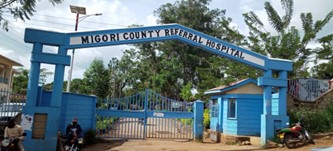
Migori County Referral Hospital
Migori County Referral Hospital is a prominent healthcare institution located in Migori, Kenya. Migori County is a county in the former Nyanza Province of southwestern Kenya. It borders Homa Bay County to the north, Kisii County to the northeast, Narok County to the southeast, Tanzania to the west and south, and Lake Victoria to the west.
Migori County is located in the sugar belt wetlands of western Kenya and enjoys a pleasant climate due to its high altitude which modifies the climate alongside the cool breeze from Lake Victoria boasting of agriculture, fishing, manufacturing and mining as the main economics activities in the region.
The referral hospital serves a population of 1,116,436. The population density is 353 PER SQ. km and 43% of the population live below the poverty line.
It serves as a critical hub for medical services in the region, providing comprehensive healthcare to the 8 sub-counties and the neighboring counties. Malnutrition remains a serious problem in Migori County, Kenya, with high rates of underweight, stunting, and wasting in children under five.
Malnutrition is one of the leading causes of childhood mortality in Migori County, Kenya. Among the under 5 years with a rate of 73 per 1,000 live births in 2022. In 2014, Migori County had the highest U5MR in Kenya at 82 per 1,000 live births. Attributable common causes of childhood mortality in Migori County include malaria, anemia, acute respiratory infection, gastroenteritis and malnutrition.
The hospital is actively involved in research and development, contributing to the global discourse on public health issues in collaboration with various research, innovative and educative organizations to enhance healthcare.
Overally, Migori County Referral Hospital stands as a vital institution in Kenya’s healthcare landscape, dedicated to advancing health and well-being in the community through quality care, research, and collaboration.
